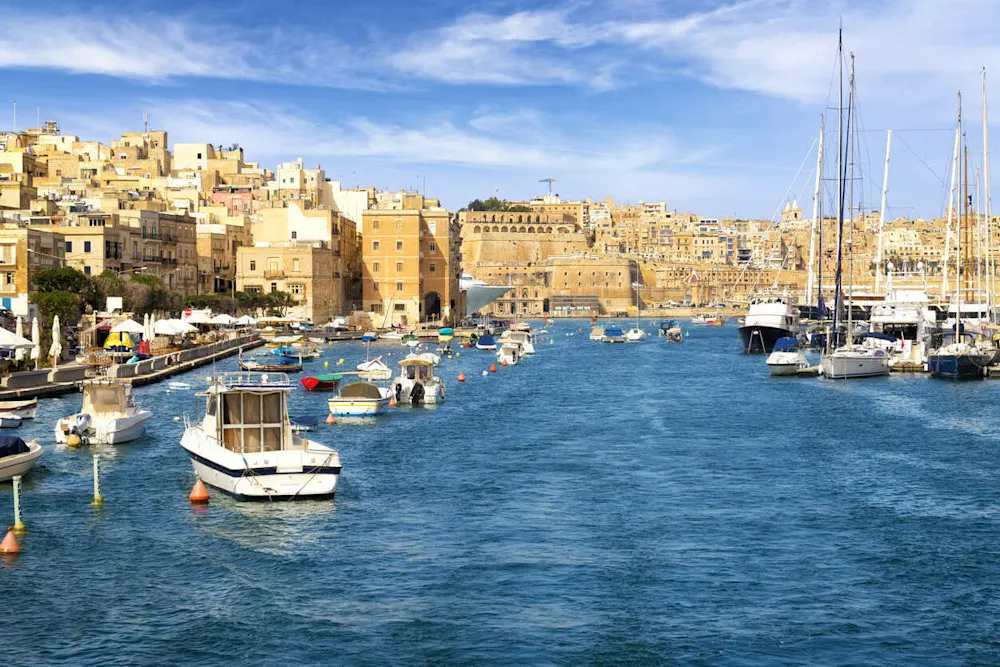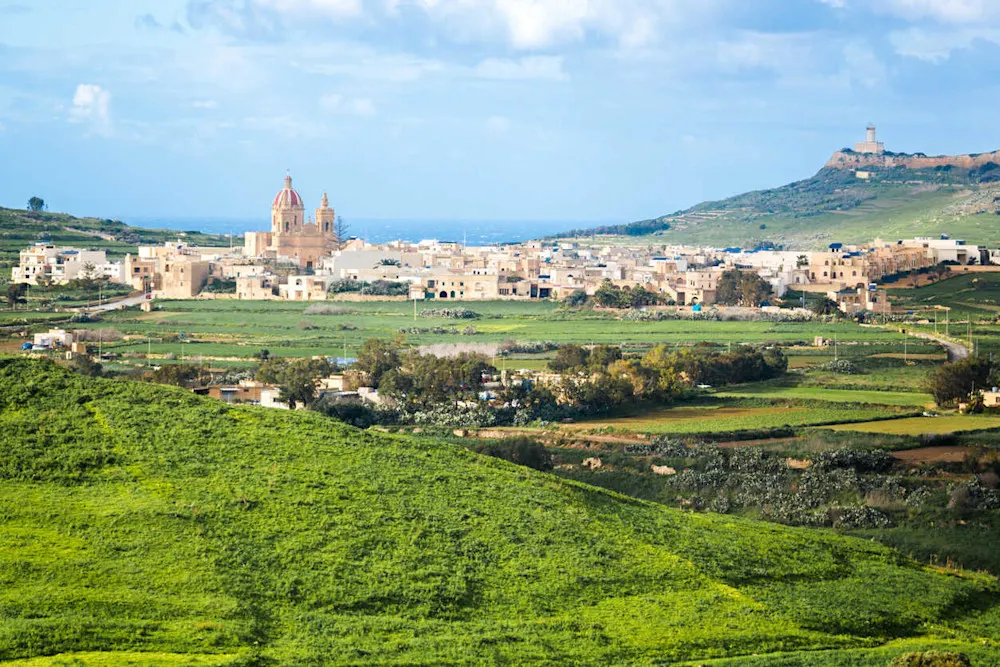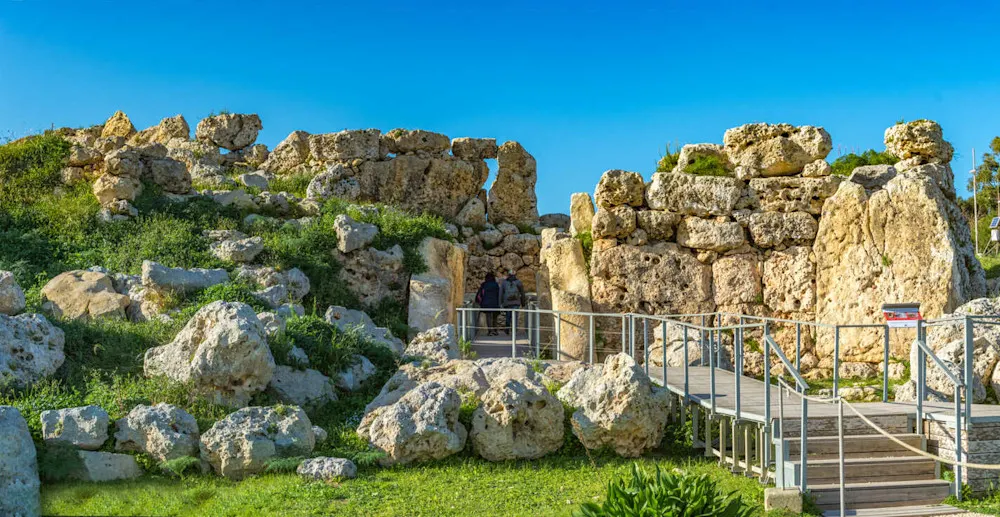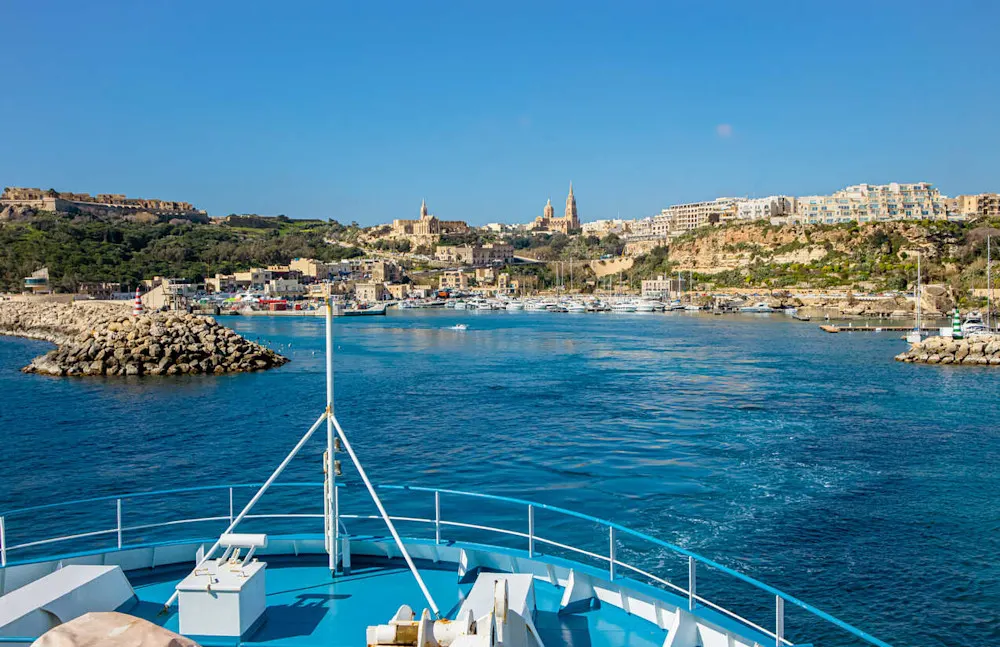Some folks love Malta; others find it chaotic and crowded. Some think Gozo is the best of the Maltese islands, while others believe it’s slow-paced and uninteresting. How you feel about these two islands depends on your lifestyle and what interests you.
If you like quiet, uncrowded beaches, you won’t find many on Malta. If you want heart-pumping nightlife, Gozo’s not the place for you. If immersing yourself in local life is your holiday dream, get on the ferry to Gozo. If connecting with other holidaymakers is on your ‘must-do list’, Malta may suit you better.
Whether your time in the Republic of Malta is an “unforgettable experience” or an “I wish I could forget it experience” depends on your personality and which island you choose.
Get Your Free Malta Report Today
Get Your Free Malta Report Today
Discover why Malta is one of our favorite European destinations, sign up to International Living's free daily postcards and receive our FREE report: Malta: The Hidden Gem of the Mediterranean.
Get the latest info on properties, healthcare and visas based on our most recent research.

By submitting your email address, you will receive a free subscription to IL Postcards, Overseas Dream Home, The Untourist Daily and special offers from International Living and our affiliates. You can unsubscribe at any time, and we encourage you to read more about our Privacy Policy.
City Energy or Village Calm?

The Malta Archipelago is made up of 23 small islands, but only two are inhabited—Malta and Gozo. Though just 2.5 miles apart, they’ve developed very different personalities over centuries.
Malta, at 17 by 9 miles (122 square miles), is the larger and busier of the two. With 545,751 residents, it’s the most densely populated place in the EU. Twenty-seven percent of its land is farmland, but much of Malta feels urban and fast-paced, with younger demographics driving its recent growth, especially among those aged 30 to 49.
Gozo, just 4.5 by 9 miles (26 square miles), is the quieter sister island. Home to 39,287 people, it’s rural, slower-paced, and dotted with farmland—94% of its land is agricultural. Gozo’s population skews older, with a higher proportion of retirees and fewer foreign residents, giving it a traditional, village-like feel.
In short: Malta is vibrant and energetic, while Gozo is peaceful and pastoral. Which appeals more depends on whether you prefer city energy or village calm.
Where Expats Settle (and Where They Don’t)

Expats from around the globe reside in both Malta and Gozo.
Malta’s Sliema and St. Paul’s Bay are notable for having the highest concentrations of expatriates. These communities are popular expat destinations in Malta due to many factors, including a high concentration of amenities, a vibrant atmosphere, and good transport links. In contrast, the smaller, more traditional towns and villages, especially in the southern part of the island, tend to have a significantly lower population of expats.
Although Gozo has a smaller expat population than mainland Malta, expatriates particularly favor several areas. The most popular spots include Marsalforn, Xlendi, and Victoria, which offer amenities and community engagements appealing to newcomers. In contrast, the smaller villages and rural regions of Gozo have a lower concentration of expats, as these areas are predominantly inhabited by local residents.
Culture and Community

Malta has a rich cultural tapestry influenced by its diverse history and strategic Mediterranean location. The island’s heritage reflects a blend of Mediterranean, Arab, and European influences, visible in its architecture, cuisine, and traditions.
Maltese cuisine features local dishes such as rabbit stew and pastizzi, which are often enjoyed during festive celebrations. The Maltese language, derived from Arabic and Latin roots, adds to its uniqueness. Vibrant festivals, including the Feast of St. Paul’s Shipwreck, celebrate the island’s rich traditions and communal spirit.
Gozo also has a rich cultural heritage steeped in history and tradition. Known for its rural charm, Gozo features ancient temples, picturesque villages, and a deep connection to agrarian practices.
The island’s population retains a strong sense of identity, which is evident in its folk festivals, crafts, and traditional cuisine, which prominently includes locally sourced ingredients.
The vibrant community, primarily comprised of Gozitans, celebrates its heritage through music, dance, and festivals, such as the famous Feast of San Gorg. With a slower pace of life, Gozo offers an authentic glimpse into Maltese culture and Mediterranean charm.
History Everywhere: From Temples to Fortresses

Malta is home to many remarkable historical sites that reflect its rich past. Valletta, the capital, is a UNESCO World Heritage site, featuring stunning baroque architecture, including The Grand Master’s Palace and Lascaris War Rooms.
The megalithic temples of Ħaġar Qim and Mnajdra, dating back to 3600 BC, showcase Malta’s prehistoric significance. Additionally, the medieval city of Mdina, with its fortified walls and narrow streets, offers a glimpse into the island’s Norman period. These sites collectively highlight Malta’s unique cultural and historical heritage.
Gozo is steeped in history. It is home to remarkable historical sites that celebrate its deep heritage. The Ġgantija Temples, dating back to 3600 BC, are among the world’s oldest free-standing structures and a UNESCO World Heritage site.
The Citadel in Victoria showcases the island’s medieval architecture and has outstanding panoramic views of the island. The stunning Azure Window, though collapsed, remains a symbol of natural beauty and history.
Additionally, the ancient church of Ta’ Pinu attracts numerous pilgrims and visitors. Each site reflects Gozo’s diverse past, from prehistoric to medieval times, making it an appealing destination for history enthusiasts.
Cost of Living: Which Island Fits Your Budget?

When considering the cost of living, Malta and Gozo present distinct differences that can influence your choice of destination. Malta, the largest and most populous island, generally has a higher cost of living due to its growing economy and urban lifestyle.
Housing is a significant factor, with rentals and property prices in major areas like Valletta and Sliema often exceeding those in Gozo. On average, a two-bedroom apartment in Malta can range from €1,200 to €1,800 per month, depending on the location, amenities, and age.
In contrast, Gozo offers a more affordable pace of life. Rental prices are typically lower, ranging from €600 to €1,000 for similar accommodations.
The cost of everyday amenities, such as groceries and dining out, is also generally cheaper in Gozo, as much of its produce comes directly from local farms, making it cost less, fresher, and sustainable.
While both islands have similar costs for utilities and healthcare, Grozo’s slower pace can translate to lower expenses. However, as tourism continues to rise in both areas, particularly in Malta, it’s essential to consider how much you value lifestyle amenities versus budget. Ultimately, your choice between the two islands will depend on your budget and lifestyle goals.
Getting Around: Buses, Ferries, and the Joys of Parking
Public transportation on Malta and Gozo offers distinct experiences due to the islands’ size and infrastructure.
Malta has a more extensive bus network, providing frequent and efficient services across many routes, making it easier to navigate urban areas. The Tallinja bus card allows unlimited travel, enhancing accessibility for residents and tourists.
In contrast, Gozo’s public transport is limited to fewer routes, primarily serving connections between villages, Victoria, and the ferry terminal. While buses on Gozo are reliable, their frequency is less than in Malta. The ticket price is the same on both islands, but Malta’s system is more comprehensive.
Driving, Roads, and Parking
Honestly, neither Malta nor Gozo is a place where driving is fun or easy. For many folks, right-hand-drive cars driving on the left side of the road are enough to make them forget driving and take the bus. Add to that more cars than people, and it’s a muddle.
Malta experiences extreme traffic congestion on its few highways, often leading to delays. The secondary roads are typically narrow two-lane affairs with a high traffic volume. Additionally, neighborhood streets are narrow, featuring twists, turns, and blind corners. Transit buses and construction vehicles often obstruct the streets, again causing delays.
Gozo has no highways. There are secondary roads that are narrow two-lane routes, like Malta’s. Also, like Malta, the neighborhood streets are very narrow, winding through the village like a serpent.
Finding a place to park on either island is chaotic. There are lots of cars, but not enough spaces. At your residence on either island, you will pay dearly for an apartment with reserved off-street parking.
Our recommendation is to forget driving and auto ownership. Public transit on both islands is frequent, efficient, safe, and free with a Tallinja bus card. Cabs are generally affordable and can be promptly booked using a smartphone app like Uber or BOLT. If you need a car, you can rent one easily in villages and at the airport.
How to Get There (and Between the Islands)

Most folks get to Malta by air. You can also get there via ferry from Sicily. To get to Gozo, you can take one of two public ferries or a private boat.
When staying in Malta, you can take a taxi or a bus from the airport. The public transit desk in the Arrivals Hall will help you figure out which bus to take to your destination. Consider purchasing transit cards that offer discounted fares for visitors.
If taking a taxi from the airport, go to the taxi desk and tell them your destination. They will determine the cost and accept payment in cash or by card. The next available driver at the desk will take your bags and escort you to his parked taxi.
When you go to Gozo from the airport, you can take a taxi or a bus to the ferry terminals. The public transit desk in the Arrivals Hall will help you determine which bus to take (the Gozo Channel Ferry—foot passengers, bicycles, and autos, or Gozo Highspeed—foot passengers only).
The ferries depart from different terminals, but both arrive at Mġarr Harbor in Gozo. Which one you take depends on the time of day, whether you have a vehicle, and the sea conditions at departure.
Mġarr Harbour is also a bus terminal with buses traveling to all parts of the island and the central bus terminal in Victoria.
Final Thoughts
Choosing the right Maltese island for your Mediterranean escape is crucial, as each offers a unique experience tailored to different lifestyles and preferences. Malta and Gozo have distinct characteristics; understanding these differences can significantly enhance your Mediterranean experience.
Suppose you thrive in lively environments with vibrant nightlife and abundant social activities. In that case, Malta may be the ideal choice for you. The bustling cities, rich cultural events, and diverse dining options provide a dynamic atmosphere that appeals to many.
On the other hand, if you seek tranquility and a connection to nature, Gozo’s serene landscapes and rural charm might be more suitable. Known for its uncrowded beaches and picturesque villages, Gozo offers a more relaxed pace, perfect for those looking to escape the chaos of modern life.
Considering your interests—immersing yourself in local culture, enjoying outdoor adventures, or simply unwinding by the sea—can guide your decision. Ultimately, selecting the right island ensures that your Mediterranean escape will be both enjoyable and fulfilling, making it a memorable experience that resonates with your preferences and lifestyle.
It’s worth noting that the islands are conveniently situated just 2.5 miles apart. A short ferry ride allows you to explore either island at your leisure.
Get Your Free Malta Report Today
Get Your Free Malta Report Today
Discover why Malta is one of our favorite European destinations, sign up to International Living's free daily postcards and receive our FREE report: Malta: The Hidden Gem of the Mediterranean.
Get the latest info on properties, healthcare and visas based on our most recent research.

By submitting your email address, you will receive a free subscription to IL Postcards, Overseas Dream Home, The Untourist Daily and special offers from International Living and our affiliates. You can unsubscribe at any time, and we encourage you to read more about our Privacy Policy.
